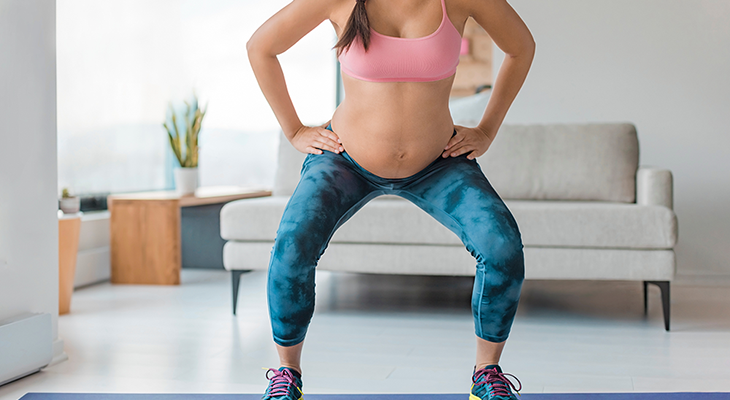Top Pelvic Health Treatments For A Better Quality Of Life

Pelvic health plays a crucial role in our overall well-being, influencing daily activities, mobility, and comfort. For many, pelvic health issues can become a source of discomfort, pain, and frustration, but the good news is that various treatments are available to improve pelvic health and restore a better quality of life. Whether you’re dealing with pelvic floor disorders, incontinence, or chronic pain, seeking the right treatment can make a significant difference. In this blog, we’ll explore some of the top pelvic health treatments that can help you regain control and feel your best.
1. Physical Therapy For Pelvic Floor Dysfunction
Pelvic floor physical therapy is often considered one of the most effective treatments for pelvic health issues. Many people with pelvic floor dysfunction suffer from problems such as incontinence, prolapse, or pelvic pain. In order to improve function and lessen discomfort, a pelvic floor physical therapist specializes in exercises and methods that strengthen and relax the pelvic floor muscles.
During pelvic floor therapy, patients may be guided through exercises like Kegel exercises, stretching, and biofeedback techniques. Whether strengthening weak muscles or correcting tightness that causes discomfort, these therapies can be customized to match the needs of each patient. Over time, consistent therapy can help improve bladder and bowel control, reduce pelvic pain, and enhance overall pelvic health.
When it comes to improving pelvic health, a variety of Pelvic Health Treatments are available to address a range of issues. Pelvic therapy options, such as physical therapy, offer effective non-surgical pelvic care that can help strengthen the muscles of the pelvic floor, alleviate pain, and improve overall function. For those looking for advanced treatments for pelvic health, there are options like biofeedback, electrical stimulation, and even laser therapies, which can provide targeted solutions for more complex conditions. These non-invasive treatments not only promote healing but also reduce the need for surgery, offering individuals an opportunity to enhance their pelvic well-being without the risks associated with more invasive procedures.
2. Medication For Pelvic Pain Relief
For those suffering from chronic pelvic pain, medications may be an essential part of treatment. Pelvic pain can arise from various conditions, including endometriosis, interstitial cystitis, or pelvic inflammatory disease. Many times, treatments like hormone therapy, muscle relaxants, or non-steroidal anti-inflammatory drugs (NSAIDs) can help ease pelvic pain and inflammation.
In more severe cases, prescription medications like nerve pain relievers or antidepressants may be recommended. These treatments can help manage pain, reduce spasms, and improve overall pelvic health. To choose the appropriate prescription for your particular illness, it’s crucial to speak with a healthcare professional.
3. Surgical Options For Pelvic Disorders
For some pelvic health problems, surgery may be the best course of action, especially if conservative measures like physical therapy or medication are insufficiently helpful. Surgical interventions can help correct issues such as pelvic organ prolapse, severe incontinence, or fibroids that cause discomfort and pain.
For example, pelvic organ prolapse surgery involves repositioning or repairing the weakened pelvic tissues to restore support to the pelvic organs. Similarly, surgical options for incontinence can include sling procedures or bladder neck suspension to improve bladder control. For patients with more severe disorders, surgery can provide long-lasting comfort and substantial improvements in pelvic health, even though it is usually reserved for extreme cases.
4. Lifestyle And Dietary Modifications
Making lifestyle and dietary changes is another important aspect of improving pelvic health. Eating a balanced diet, exercising, and maintaining a healthy weight can all have a significant impact on pelvic function and lower the chance of developing pelvic health problems. For example, obesity can put extra pressure on the pelvic region, leading to problems like incontinence or prolapse. People can lessen the strain on the pelvic floor and enhance their general pelvic health by keeping their weight in check.
Additionally, certain foods and beverages can irritate the bladder and exacerbate pelvic issues. Avoiding caffeine, alcohol, and acidic foods may help manage symptoms of bladder-related pelvic disorders. Staying hydrated and eating fiber-rich foods can also support healthy bowel function, preventing constipation that can strain the pelvic muscles.
5. Mind-Body Techniques For Stress Relief
Anxiety and stress can negatively impact pelvic health by frequently causing muscle tension, pain, and dysfunction. Deep breathing exercises, yoga, and meditation are examples of mind-body practices that can help lower stress and enhance pelvic floor function. These practices promote relaxation, reduce tension in the pelvic muscles, and improve overall well-being.
Yoga, in particular, can be beneficial for pelvic health. Certain poses target the pelvic region, improving flexibility, strength, and relaxation. Breathing exercises can also help with the relaxation of the pelvic floor muscles, addressing both physical and emotional factors that contribute to pelvic discomfort.
Conclusion
Taking a proactive approach to pelvic health can significantly improve your quality of life. Whether through physical therapy, medication, lifestyle changes, or surgical treatments, addressing pelvic health issues can help restore comfort, mobility, and overall wellness. It is imperative that you seek the advice of a healthcare professional who specializes in pelvic health issues if you are experiencing them. With the right treatment plan tailored to your needs, you can experience lasting relief and return to enjoying your daily activities with ease.
Also read: Managing sleeping hours






